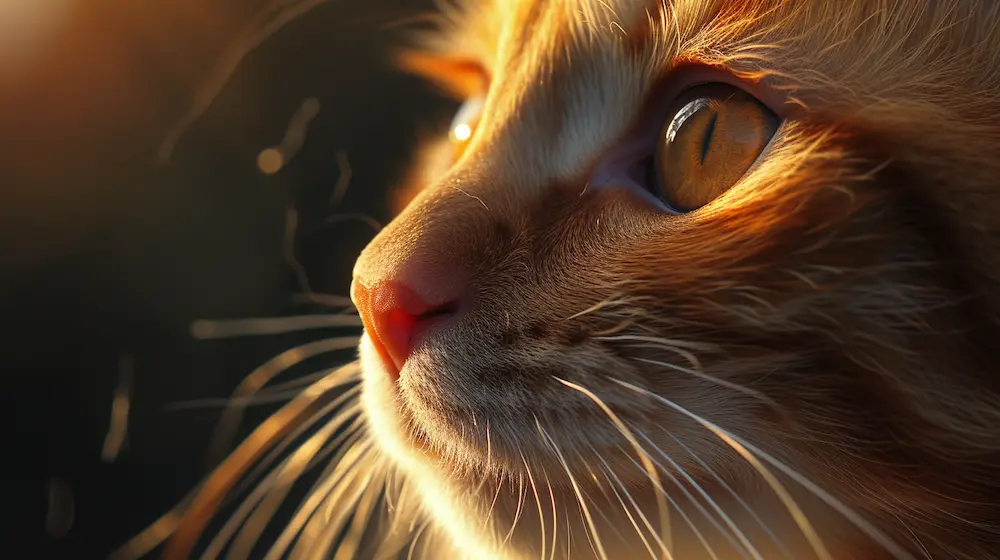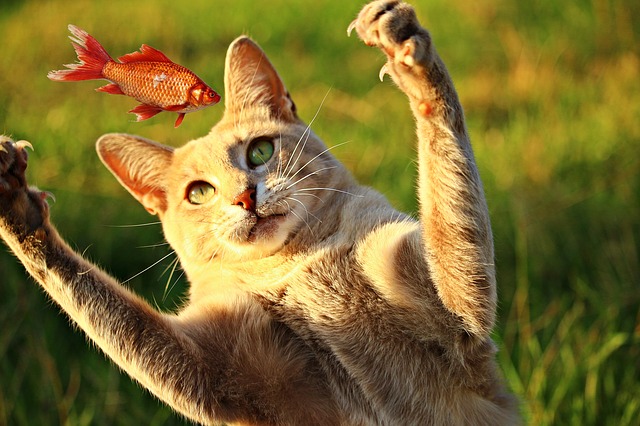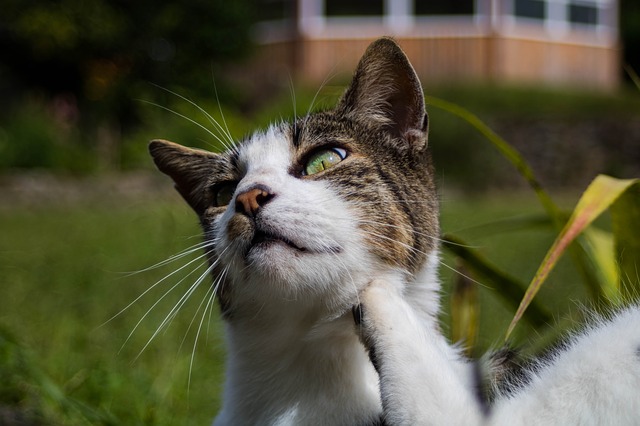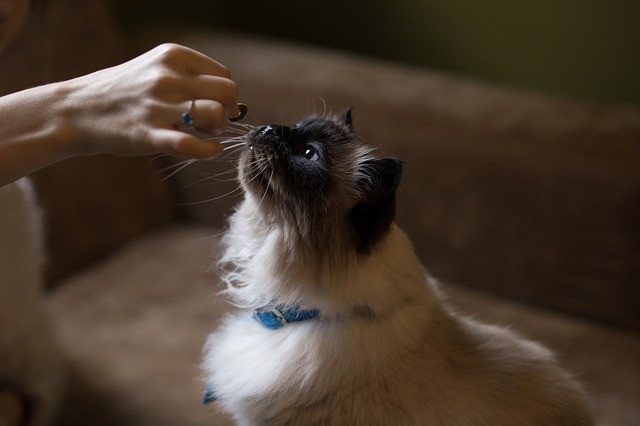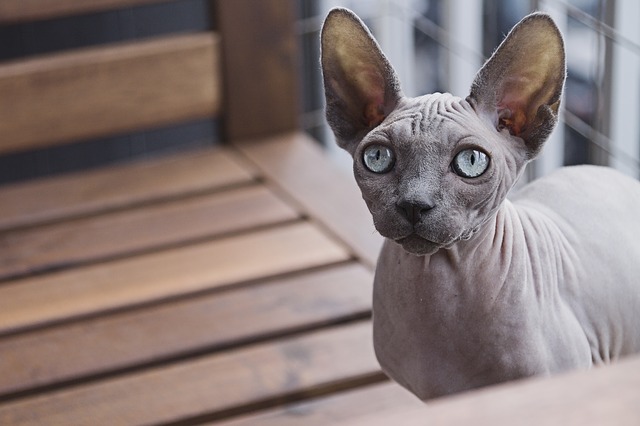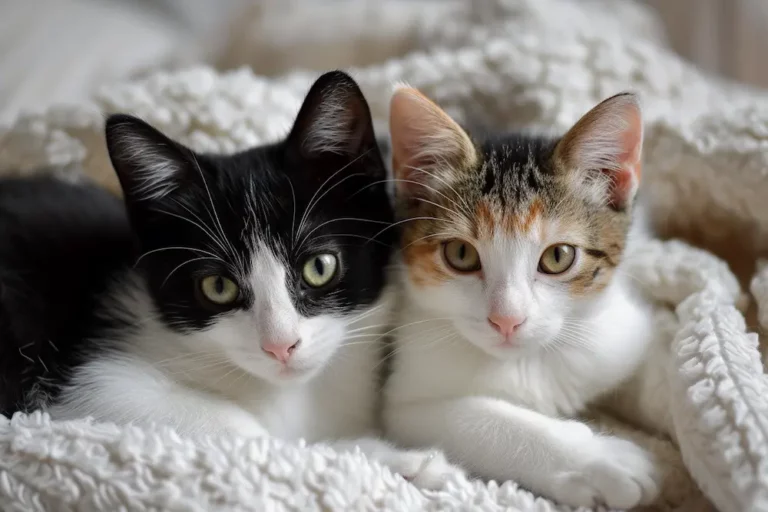Cat Diabetes: What Every Cat Owner Needs To Know!
Did you know that just like humans, cats can also suffer from diabetes?
It’s a condition that, while serious, is completely manageable with the right care and diet.
Whether your
It might feel overwhelming at first, but don’t worry—I’m here to guide you through the essentials of managing this condition.
What is Cat Diabetes?
Diabetes mellitus, commonly known simply as diabetes, stands as a prevalent disease among domestic cats, particularly in their middle to senior years.
Essentially, it’s a condition where the
I find that understanding two main types of diabetes mellitus in cats sheds light on the severity and management necessities of the condition.
Type I diabetes, though rare in cats, involves the pancreas’s inability to produce sufficient insulin.
Conversely, Type II, which is more common, presents a scenario where the
Besides, the primary symptoms demonstrating that a
Observing any of these signs warrants a visit to the vet.
If diagnosed, routine management includes carefully monitoring their diet and potentially administering insulin injections, aimed to stabilize blood glucose levels.
Which Cats Are at Risk for Diabetes?
Understanding which cats are at risk for diabetes aids significantly in preventive care and early diagnosis.
Various factors contribute to an increased risk of diabetes in cats, and I’ll investigate into these to help
Age and Weight Factors
Cats that are middle-aged to older are generally more susceptible to developing diabetes.
Typically, cats over the age of six are at a higher risk, with the incidence peaking around 9 to 13 years. Likewise, overweight and obese cats face a significantly higher risk.
Fat cells produce hormones that can lead to insulin resistance, a key factor in Type II diabetes.
Hence, maintaining a healthy weight through diet and exercise is crucial.
Genetic Predisposition
Certain breeds have a higher propensity for diabetes.
For example, the Burmese breed shows a notably higher incidence of the condition compared to others.
This doesn’t mean every Burmese
Previous Medication Exposure
Cats previously treated with certain types of medications, such as corticosteroids, are also at a heightened risk.
These medications can interfere with the body’s natural insulin, increasing the likelihood of diabetes developing.
If your
Lifestyle and Diet
A
Cats that are mostly indoors and get minimal exercise are more likely to gain excess weight, thereby increasing the risk of diabetes.
Also, a diet high in carbohydrates can contribute to the development of obesity and insulin resistance.
Most Common Signs of Diabetes Mellitus in Cats
How Blood Glucose Relates to the Symptoms You See
When a
Insulin, a crucial hormone, helps regulate the movement of sugar (glucose) into cells, where it’s converted into energy.
If this hormone is missing or not functioning properly, glucose accumulates in the blood, leading to hyperglycemia, or high blood sugar.
This imbalance significantly impacts your
I’ll outline how elevated blood glucose triggers these symptoms, providing a clearer understanding of what to watch out for in your pet.
- Increased Thirst and Urination: As the level of glucose in the blood rises, the kidneys, unable to reabsorb all that extra glucose, flush some out through the urine. This glucose pulls water along with it, resulting in large volumes of urinary output. To compensate for this fluid loss, cats with diabetes drink more water, a condition known as polydipsia. So, if you often find the water bowl empty or see your
cat urinating more frequently, there could be cause for concern. - Weight Loss Even though Normal or Increased Appetite: This puzzled me the first time I encountered it with my
cat . Even though consuming her meals heartily, she was losing weight. Here’s why: since the body of a diabeticcat can’t efficiently convert glucose into energy, it starts breaking down stored fat and muscle for fuel, leading to weight loss. This occurs even though thecat eats well, known as polyphagia, an attempt by thecat to offset an internal sensation of energy depletion. - Lethargy or Weakness: When a
cat ‘s cells aren’t getting sufficient glucose, it leads to a lack of energy. Mycat showed this through less playtime and more nap times. You may notice yourcat lounging more than usual or showing general disinterest in activities that once excited them. - Poor Coat Condition: High blood glucose levels can also affect your
cat ‘s fur, making it dull and unkempt. The lack of proper nutrient conversion and the chronic dehydration associated with diabetes can result in a coat that’s less plush and vibrant.
How Do Vets Diagnose Feline Diabetes?
Diagnosing feline diabetes involves several critical steps that my veterinary colleagues and I use to ensure accurate results.
Understanding these steps can help
Initial Consultation and History Review
Veterinarians start with a thorough consultation.
During this stage, I gather detailed information about the
Owners might report increased thirst and urination, weight loss, or lethargy—key signs that suggest diabetes.
This history helps pinpoint risk factors like obesity or a high-carb diet previously discussed in the article.
Physical Examination
Next, a comprehensive physical exam gets conducted.
This examination helps assess the
Observing these physical signs adds another layer to my diagnostic approach.
Blood and Urine Tests
The most definitive part of the diagnosis comes from blood and urine tests.
I typically request a Complete Blood Count (CBC) and a serum biochemistry profile along with a urine analysis.
These tests measure the
Fructosamine Test
If the initial tests show elevated glucose levels, I’ll also recommend a fructosamine test.
This test provides an average blood glucose concentration over the last two to three weeks, offering a more stable indication of blood sugar levels than a single day’s reading might.
Continuous Glucose Monitoring
In some cases, continuous glucose monitoring systems may be employed.
These devices offer real-time insights into glucose levels over several days, allowing for detailed observation under normal living conditions.
This method is particularly useful if I suspect fluctuations in glucose readings might be affected by stress.
By employing these diagnostic methods, veterinarians can accurately identify and start treating feline diabetes.
Each step, from consultation to detailed testing, is crucial for a reliable diagnosis, ensuring that treatment can be tailored to each unique case.
Treatment of Feline Diabetes
At-Home Insulin Therapy
At-home insulin therapy constitutes a cornerstone of managing
Administering insulin injections to cats can sound daunting, but it’s a manageable routine that owners can master with proper guidance.
Typically, vets prescribe a specific type and dose of insulin, which varies based on the
The process involves injecting insulin subcutaneously; common sites for these injections include the scruff of the neck or the sides of the body.
I recommend using a calm approach with your
For example, pairing the injection with a light meal or a favorite activity helps create a positive association.
Also, consistency in the timing of injections helps stabilize the
Most cats require injections twice daily, approximately 12 hours apart. It’s crucial to adhere to this schedule as closely as possible.
Blood-Glucose Curve
Monitoring the effectiveness of insulin therapy is done through a blood-glucose curve.
This tool is essential for proper diabetes management.
It involves measuring your
I’ve found that conducting this test at home causes less stress for your
To perform a blood-glucose curve, you’ll need a veterinary glucometer and some practice to efficiently collect a small blood sample from your
Throughout the day, you’ll record your
These readings help your vet determine if the current insulin type and dose are effective or need adjustments.
Adjusting Your Cat ’s Insulin Dose
Adjusting your
This adjustment should always be done under veterinary supervision, based on observations from regular blood-glucose curves.
For instance, if you consistently record lower than normal glucose levels before the morning feeding, your vet might suggest reducing the insulin dose.
Conversely, if the levels are consistently high, an increase might be necessary.
Frequent communication with your vet ensures the adjustments are precise and tailored to your
By understanding and applying these principles, you can effectively manage your
Regular follow-ups with your vet, adherence to therapy, and ongoing monitoring are key components of successful diabetes management in cats.
Caring for a Diabetic Cat
Monitoring Your Cat ’s Glucose Levels
Monitoring glucose is crucial in managing diabetes in cats. I recommend using a glucometer specifically designed for pets.
Cats, unlike humans, have very different blood glucose ranges.
For example, a normal range for a healthy non-diabetic
Diabetic cats frequently exhibit levels well above this.
By consistently tracking these levels at home, you’ll notice trends that can help adjust your
Besides, recording these numbers provides invaluable data for your veterinarian.
Monitoring Your Cat ’s Insulin Response
Understanding and recording your
Each
I find it helpful to observe signs of hypoglycemia (such as lethargy or seizures), which indicate an overdose.
But, excessive thirst and urination might suggest that the insulin dose is too low.
Adjustments should never be made without prior consultation with your vet, ensuring safe and effective diabetes management.
Managing Your Cat ’s Diet and Weight
Diet plays a pivotal role in managing feline diabetes.
Specifically, a high-protein, low-carbohydrate diet helps regulate blood sugar levels more effectively.
Brands like Purina DM and Hill’s m/d are excellent choices.
Also, maintaining an optimal weight for your
Obese cats need a carefully controlled calorie reduction plan, which should be designed in collaboration with your vet.
Providing Appropriate Exercise
Exercise is another key component of diabetes management in cats.
Regular activity helps improve blood glucose control and aids in weight management.
Simple activities such as feather toy chases or laser pointer games can significantly improve your
Regular, moderate exercise ensures consistency which is particularly beneficial for stabilizing blood glucose levels.
Keeping a Daily Log of Your Cat ’s Health
I’ve found that keeping a daily log is indispensable for managing feline diabetes effectively.
This log should include food intake, insulin injections, glucose readings, and any notable behavior changes or symptoms.
Apps like FelinelyDiabetes make tracking these details manageable and can simplify your regular vet check-ins.
This detailed record-keeping supports your vet in making informed decisions about your
By adhering to these guidelines, you effectively become a crucial partner in your
Life Expectancy for Diabetic Cats
Managing diabetes in cats effectively can lead to a full and vibrant life for your
With the right care and consistent management, many diabetic cats live as long as their non-diabetic counterparts.
It’s crucial to adhere to the treatment plan and maintain regular vet check-ups to monitor their condition.
Remember every
By staying committed to their health regimen and adapting as needed you’re providing your
